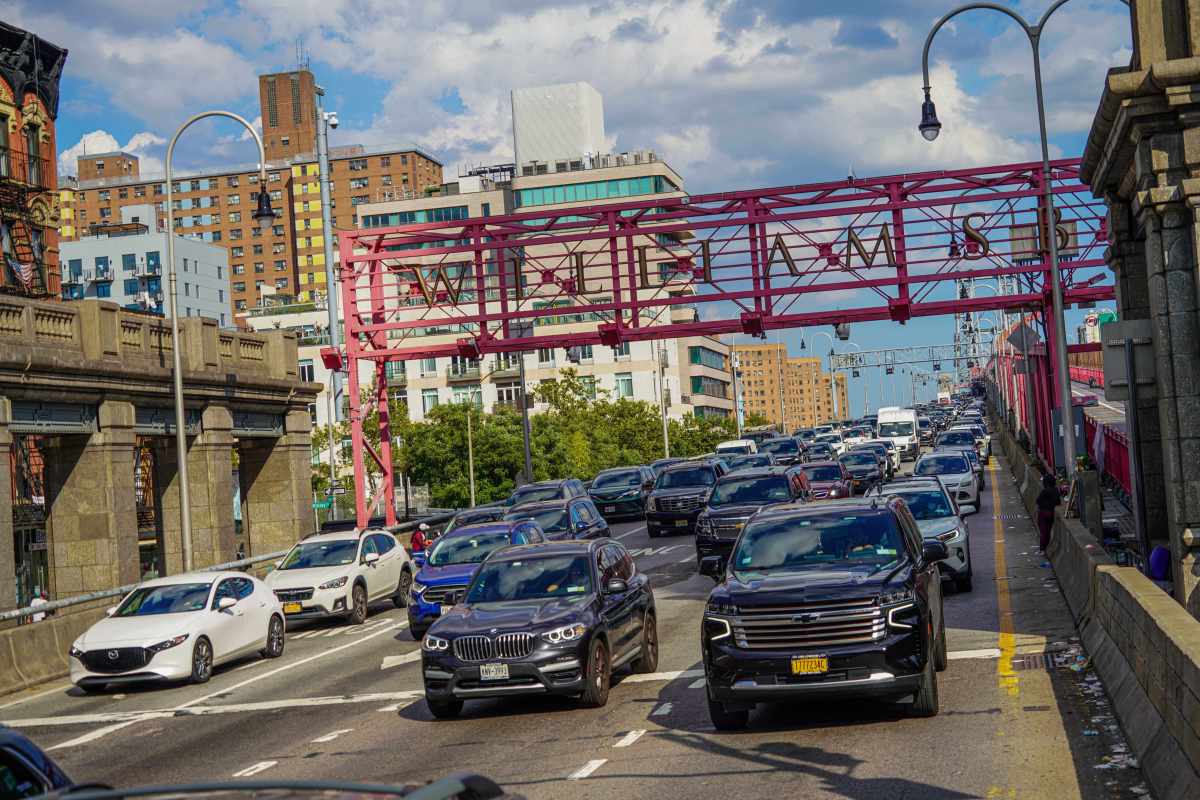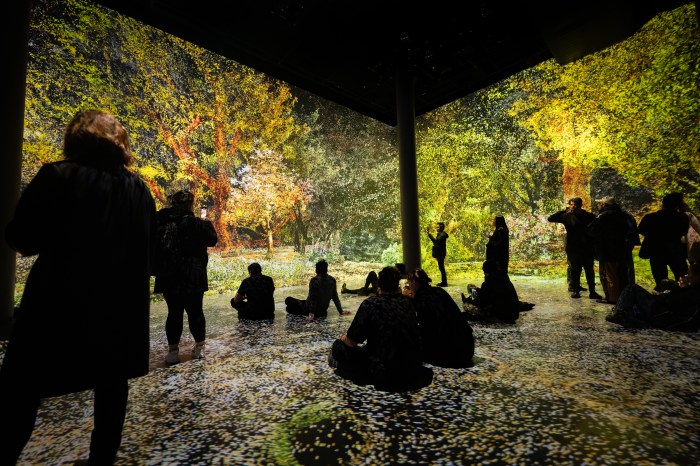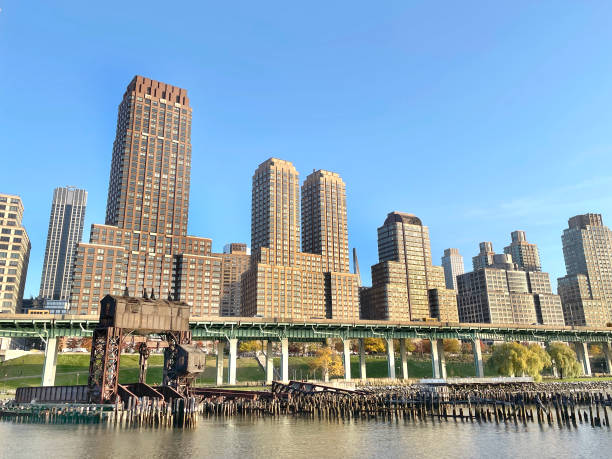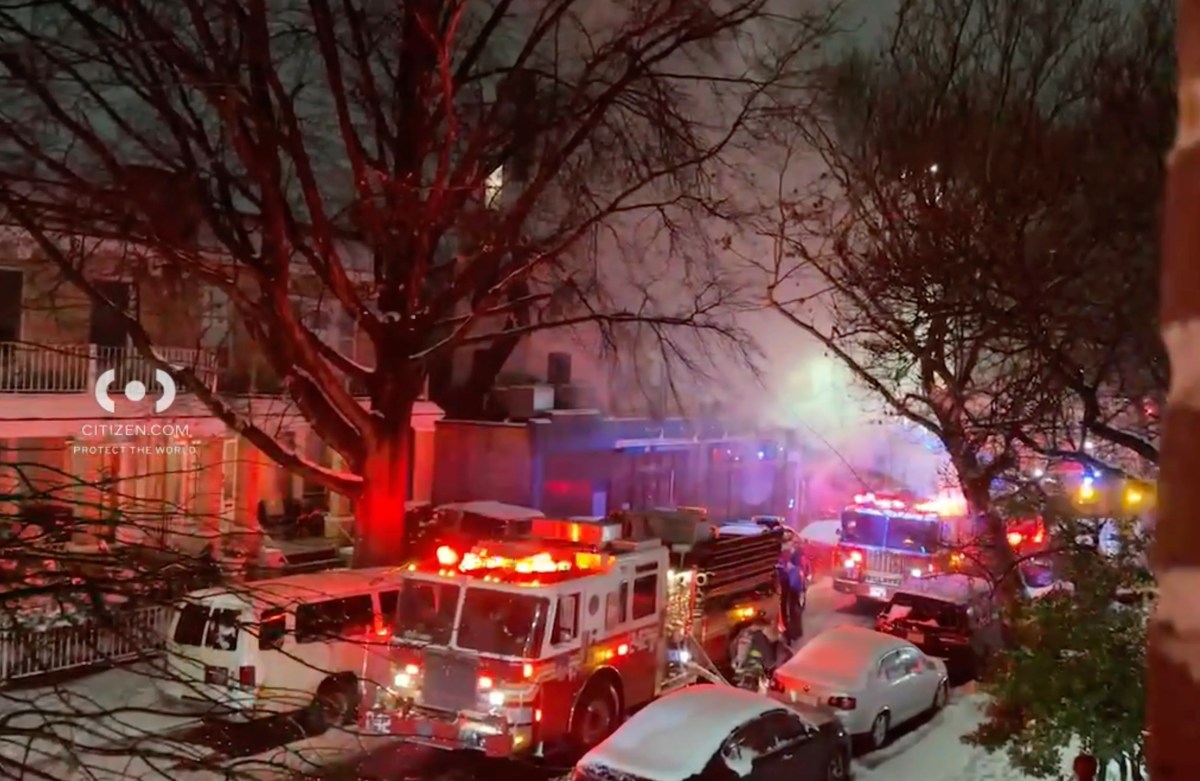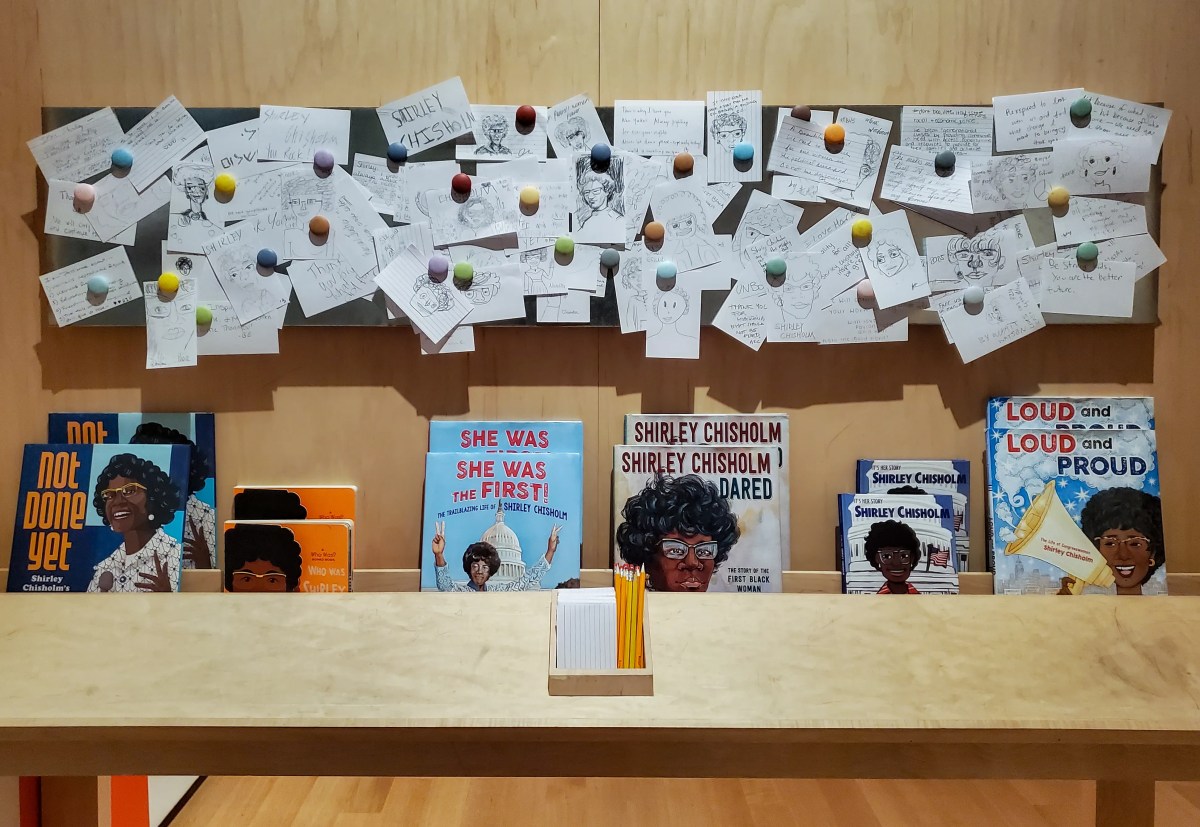New Yorkers driving into Manhattan south of 60th Street will have to shell out $15 for the privilege starting this spring, an internal MTA panel deliberating policy for congestion pricing recommended on Thursday.
The $15 recommendation is right in the middle of a $9-to-$23 range previously floated by the Traffic Mobility Review Board, the group deliberating policies and rates for the first-in-the-nation congestion pricing program.
Motorists entering the Manhattan central business district would only have to pay the toll once per day; small trucks would be hit with a $24 charge while larger trucks would face a $36 toll and motorcycles would pay $7.50, with discounts of 75% overnight to encourage off-hours deliveries.
Those entering Manhattan on already-tolled crossings, like the Holland, Lincoln, Queens-Midtown, and Brooklyn-Battery tunnels will receive a $5 crossing credit to lessen the charge, but those crossing from New Jersey on the George Washington Bridge will not. Trucks will get a larger crossing credit while motorcycles will get a smaller one.
Meanwhile, taxi and for-hire vehicle drivers will not have to pay the toll, even if they are not carrying a passenger into the CBD. Instead, trips into lower Manhattan by taxi will see a $1.25 surcharge on fares, while Uber and Lyft rides will be hit with a $2.50 surcharge.
Low-income drivers will be eligible for half-off discounts on the tolls after making at least 10 crossings in a month, while low-income Manhattan residents who live in the zone will be eligible for state tax credits to offset the cost of tolls.
The TMRB mostly brushed aside a huge laundry list of exemption requests, aiming to keep the base toll low by not creating too many carveouts.
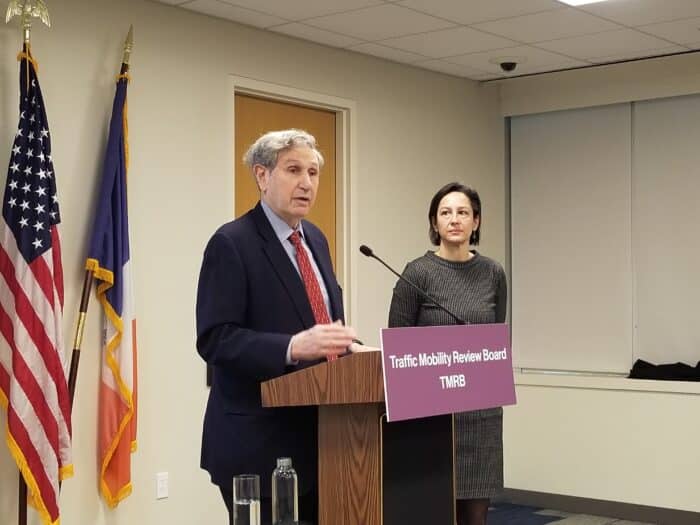
“We really made an effort to keep the base toll as low as we possibly could,” said Carl Weisbrod, the chair of the TMRB. “The way we kept that base toll as low as we possibly could was first by limiting exemptions.”
“How do we serve the many, not the few,” he noted. “And how do we be as fair as possible?”
Speaking to reporters on Thursday, Gov. Kathy Hochul said that when speaking with New Yorkers, she came away thinking a $23 toll was too high and “would have a detrimental impact on families.”
“So, I wanted that number lower,” said the governor. “That number released today is that’ll be $15 per trip – so that’s lower.”
New York will be the first city in the United States to implement a congestion pricing program, but it’s already a fact of life in other global cities like London, Stockholm, and Singapore. The program was first approved by New York lawmakers in 2019, after being discussed by policymakers for decades.
The MTA aims to raise about $1 billion per year from the tolls, which will eventually be bonded out to raise about $15 billion for the agency’s capital projects, like replacing long-outdated train signals and making the subway accessible for people with disabilities. The revenue is also intended to fund both the MTA’s expansion projects, like the Second Avenue Subway, and shoring up its ancient and vulnerable infrastructure undergirding the transit system.
Additionally, the toll is meant to discourage driving into traffic-choked Manhattan, reducing the number of cars on the borough’s streets and reducing carbon emissions in the region.
“Absent this we’re gonna be choking in our own traffic for a long time to come,” Weisbrod said. “And the MTA is not gonna have the funds necessary to provide quality service.”
The TMRB projects 17% fewer cars will enter the CBD under congestion pricing, and car traffic will decline throughout the New York metropolitan area.
The MTA hopes to have congestion pricing up and running by the spring, and has already installed 60% of the necessary gantries for automated tolling at the entrances to the congestion zone. The recommendation will be up for a vote at the MTA board next week, after which point it will be subject to months of public comment, including hearings in February 2024, before needing a final MTA stamp of approval ahead of implementation.
But looming over the long-stewing kickoff is a lawsuit filed this summer by New Jersey, which charges the federal government “rubber-stamped” the program without a proper environmental impact statement.
New Jersey Governor Phil Murphy has contended that the program will take money out of Garden Staters’ pockets and shoot up congestion in the state as drivers seek to avoid the congestion zone. On Wednesday, Murphy said the TMRB’s recommendations were “wholly inadequate” and faulted the lack of credit for the George Washington Bridge, which he said would wreak congestion havoc as drivers “shop” for a cheaper toll.
“Everyone in the region deserves access to more reliable mass transit, but placing an unjustified financial burden on New Jersey commuters is wrong,” Murphy said. “We are left with no choice than to continue addressing our concerns through litigation.”
Both New Jersey and the MTA have hired high-powered attorneys to plead their cases in federal court. The MTA’s chief of construction and development, Jamie Torres-Springer, said Wednesday that the agency is confident it will prevail in the suit, but noted that the litigation is already delaying MTA capital projects like signal upgrades, and further delays could wreak havoc on agency plans.

“On the merits, the MTA is extremely confident the environmental review and community outreach that we undertook were very thorough, but with any lawsuit comes risk, especially of delay…and we can’t award contracts that would be paid for by congestion pricing until the funding is fully secure.” Torres-Springer said at the MTA’s Capital Program Committee on Wednesday. “Until the lawsuit is resolved, this risks remains and will have an impact.”
The New York Taxi Workers Alliance, a union representing some 20,000 cabbies, said on X that the TMRB’s recommendations were a “reckless proposal that will devastate an entire workforce,” vowing to “fight it with every means.”
Mayor Eric Adams, who has historically supported congestion pricing, was also critical of the TMRB’s proposal, saying Thursday that the $15 proposal is “the beginning of the conversation” ahead of further public input.
Even the TMRB itself was not spared of dissent. John Samuelsen, a TMRB member and international president of the influential Transport Workers Union, resigned from the board rather than give the proposal his imprimatur. A frequent dissenter during TMRB meetings, Samuelsen said the proposal is “all stick and no carrot.”
“The MTA has stubbornly and moronically stuck to its position that the status quo is adequate,” said Samuelsen. “It will definitely raise revenue. But raising revenue should not have been given priority status over persuading as many New Yorkers as possible to switch from cars to public transit, thus more significantly reducing traffic congestion.”
Speaking to reporters, Weisbrod appeared stumped as to where Samuelsen had actually disagreed with fellow board members.
The chair predicted that residents of the region would quickly get used to the toll, while opining that the benefits to the public would be “significant,” particularly for mass transit riders.
“I think we have to recognize for the vast, vast majority of people in this region, they use mass transit. And the goal here is to not only reduce congestion, reduce pollution for the region,” said Weisbrod. “But the core of this is how do we make mass transit in this region work in as efficient, high-quality reliable way as we possibly can.”
Read more: MTA Expands Bus Lane Camera Enforcement



